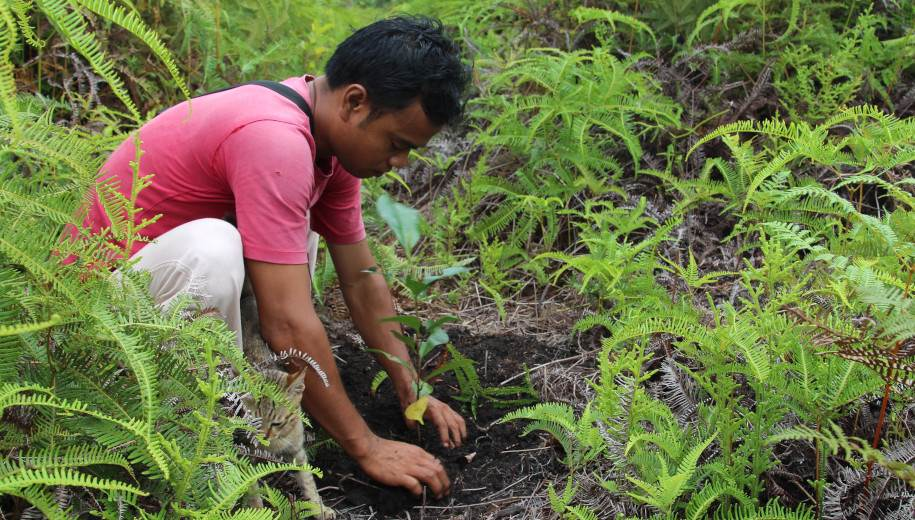Oct 30 2020
According to a new study, a better way to stop or reverse the impacts of carbon dioxide and other earth-warming greenhouse gas emissions is to determine the main areas where the action can be economical.
 A man replants trees in a peat swamp forest in Central Kalimantan, Indonesia. Extensive ecosystem restoration is seen as a key in conserving biodiversity. Image credit: World Resources Institute.
A man replants trees in a peat swamp forest in Central Kalimantan, Indonesia. Extensive ecosystem restoration is seen as a key in conserving biodiversity. Image credit: World Resources Institute.
Published recently in the Nature journal, the study notes that restoration of a select 15% of the world’s degraded or transformed lands could prevent 60% of anticipated extinction while soaking up 299 gigatons of carbon dioxide, which is equal to 30% of the entire carbon dioxide increase in the air since the Industrial Revolution.
If 30% of the world’s degraded lands are restored to their original state, over 70% of land-based birds, amphibians, and mammals can be saved from the risk of dying out while sequestering over 465 billion tons of carbon dioxide.
A majority of the priority areas determined are in tropical regions and developing countries, particularly South Asia, South-East Asia, Central America, South America, as well as West and Central Africa.
This research is particularly useful for informing strategic decision-making at the level of international policy. However, achieving restoration in practice requires cooperation among countries to share the costs of restoration, and the development of national and regional programs that encourage land owners to participate in restoration activities and that compensate them for lost revenue—an idea known as 'payment for ecosystem services.
Hawthorne Beyer, Study Co-Author and Research Fellow, University of Queensland
To determine the priority areas, the team analyzed 2,870 million hectares of ecosystems across the globe, transformed into farmland between 1992 and 2015.
Then, they evaluated the land depending upon three main motivators—a decrease in extinction risk by enhancing areas of habitats, sequestration of greenhouse gases, and a decrease in the effect on agricultural production caused by ecosystem restoration.
Not every natural ecosystem will be optimal for climate and biodiversity, and even less areas are great for both benefits and not so much for agricultural production simultaneously.
Alvaro Iribarrem, Study Co-Author, Researcher and Professor, Pontifical Catholic University
The fact that further complicates the challenge of determining the priority areas is that “restoration must not impact food production in the context of a growing global population over the coming decades,” stated Beyer.
By taking several costs and benefits into account, the team identified that restoration of wetlands and forests offers the greatest climate and biodiversity advantages, while it is less expensive to restore arid ecosystems and grasslands.
In the Caribbean, 96% of the transformed lands come under the top 15% of global priorities for biodiversity. At the same time, the restoration of South American and African shrublands offers essential advantages for their exclusive biodiversity.
Overall, coordinating restoration efforts across different types of ecosystems will yield the greatest overall benefits.
Hawthorne Beyer, Study Co-Author and Research Fellow, University of Queensland
Beyer stated this in a press release to journalists. According to Douglas Muchoney, head of FAO’s Geospatial Unit, the study is educative and “a jumping off point for more local understanding of local ecologies.”
However, Beyer underlines that to efficiently address ecosystem restoration, specifically as corresponds to global challenges, such as the SDGs, researchers, in general, need to consider ecosystems less as an abstraction and more like real places with special landscapes—and all the difficulties that entail.
“We have to anticipate insects and pathogens and people and policy,” added Beyer.
Journal Reference:
Strassburg, B. B. N., et al. (2020) Global priority areas for ecosystem restoration. Nature. doi.org/10.1038/s41586-020-2784-9.